Waste-Based Pervious Concrete for Climate-Resilient Pavements
Abstract
:1. Introduction
2. Materials and Methods
2.1. Materials
2.2. Mix Designs
2.3. Test Methods
3. Results and Discussion
3.1. pH Measurement
3.2. Unit Weight
3.3. Compressive Strength
3.4. Splitting Strength
3.5. Absorption of the Cementless Pastes
3.6. Sulfate Resistance
- (a)
- Groundwater contains natural sulfates such as sodium sulfate (Na2SO4), potassium sulfate (K2SO4), magnesium sulfate (MgSO4), and calcium sulfate (CaSO4). Excessive contents of these sulfates mean excessive contents in the soil as well, which results in soil acidification.
- (b)
- Sulfates are one of the main components of seawater. Thus, cement-based materials applied to harbor engineering or marine environments are submerged in seawater for long periods of time and are easily corroded by sulfates in the seawater.
3.7. Permeability
3.8. Pore Structure of the Cementless Pastes
3.9. XRD of the Cementless Pastes
4. Conclusions
- Replacing cement with CFFA and BFS can improve the bleeding of the specimens and shorten the setting time but it reduces workability.
- Replacing cement with CFFA and BFS results in lower compressive strength than that in pervious concrete made with cement (only 90% of that after 28 days of curing). However, for normal engineering applications, such concrete still has adequate strength to serve as the materials of waterworks structures or pervious backfill materials that do not need to be compacted, which is 1.5 MPa to 14 MPa.
- Replacing cement with CFFA and BFS gives pervious concrete greater resistance against chemical substances. However, as the proportion of CFFA increases, the concrete’s resistance to chloride ion penetration declines, which affects the durability of the concrete. Thus, in terms of chemical resistance, a BFS:CFFA ratio of 7:3 is optimal, and the resulting chemical resistance was even better than that of cement specimens in the control groups. What is worth noting is that the chemical resistance remains good even when the FPV is reduced. Whether the FPV can be reduced further for better permeability is an issue worth investigating in the future.
- From the perspective of sustainable development, cement manufacturing today is accompanied by massive greenhouse gas emissions. Manufacturing 1 ton of cement means releasing 1 ton of carbon dioxide. Fly ash is a by-product of coal burning, and recycling it will help to achieve energy conservation and reduce carbon emissions and air pollution, which has a positive impact on the environment. At present, there are many similar applications employing CFFA in construction materials around the world (such as controlled low-strength materials).
- A higher FPV means greater compactness and unit weight in the pervious concrete. Compressive and splitting strength tests indicated slightly poorer strength in specimens with a lower FPV. However, the normal cement specimens and the specimens with BFS:CFFA = 5:5 presented significant differences in permeability and chemical resistance, so more attention will need to be paid to the FPV in pervious concrete in the future.
- The water absorption rate test revealed higher water-absorbing capabilities in specimens with a higher FPV. Thus, it is possible that the pores in the pervious concrete specimens became filled with gel, which increased the water absorption rate.
- The cementless pervious concrete specimens with BFS:CFFA = 7:3 and FPV = 90% presented better compressive strength, permeability, and resistance to chemical corrosion.
Author Contributions
Funding
Acknowledgments
Conflicts of Interest
References
- Randrup, T.B.; Mcpherson, E.G.; Costello, L.R. A review of tree root conflicts with sidewalks, curbs, and roads. Urban Ecosyst. 2001, 5, 209–225. [Google Scholar] [CrossRef]
- Scholz, M.; Uzomah, V. Rapid decision support tool based on novel ecosystem service variables for retrofitting of permeable pavement systems in the presence of trees. Sci. Total Environ. 2013, 458, 486–498. [Google Scholar] [CrossRef] [PubMed]
- Ascione, F. Energy conservation and renewable technologies for buildings to face the impact of the climate change and minimize the use of cooling. Sol. Energy 2017, 154, 34–100. [Google Scholar] [CrossRef]
- Reddy, K.R.; Xie, T.; Dastgheibi, S. Removal of heavy metals from urban stormwater runoff using different filter materials. J. Environ. Chem. Eng. 2013, 2, 282–292. [Google Scholar] [CrossRef]
- Paule-Mercado, M.A.; Ventura, J.S.; Memon, S.A.; Jahng, D.; Kang, J.H.; Lee, C.H. Monitoring and predicting the fecal indicator bacteria concentrations from agricultural, mixed land use and urban stormwater runoff. Sci. Total Environ. 2016, 550, 1171–1181. [Google Scholar] [CrossRef] [PubMed]
- Hwang, V.; Masters, A.; Arocho, M.; Hwang, S. Fly ash-amended pervious concrete pavement followed by bamboo bioretention basin with Dracaena sanderiana for urban stormwater runoff control. Constr. Build. Mater. 2017, 132, 161–169. [Google Scholar] [CrossRef]
- Gavriletea, M.D. Environmental impacts of sand exploitation. Analysis of sand market . Sustainability 2017, 9, 1118. [Google Scholar]
- European Parliamentary Research Service (EPRS). Towards a circular economy-Waste management in the EU. In Science and Technology Options Assessment; PE 581.913; EPRS: Brussels, Belgium, 2017. [Google Scholar]
- Li, S.H.; Altan, H. Environmental impacts of building structures in Taiwan. Procedia Eng. 2011, 21, 291–297. [Google Scholar] [CrossRef]
- Lin, K.L.; Lo, K.W.; Hung, M.J.; Hwang, C.L.; Cheng, T.W.; Chang, Y.M.; Huynh, T.P. Hydration characteristics of recycling reduction slag and waste sludge by co-sintered treatment produced as eco-cement. Environ. Prog. Sustain. Energy 2017, 36, 1466–1473. [Google Scholar] [CrossRef]
- Shi, C.; Day, R.L. Some factors affecting early hydration of alkali-slag cements. Cem. Concr. Res. 1996, 26, 439–447. [Google Scholar] [CrossRef]
- Wu, Y.H.; Huang, R.; Tsai, C.J.; Lin, W.T. Recycling of sustainable co-firing fly ashes as alkali activator for GGBS in blended Cements. Materials 2015, 8, 784–798. [Google Scholar] [CrossRef] [PubMed]
- Wu, Y.H.; Huang, R.; Tsai, C.J.; Lin, W.T. Utilizing resides of CFB co-combustion of coal, sludge and TDF as alkali activator in eco-binder. Constr. Build. Mater. 2015, 80, 69–75. [Google Scholar] [CrossRef]
- Lee, S.H.; Kim, G.S. Self-Cementitious Hydration of Circulating Fluidized Bed Combustion Fly Ash. J. Korean Ceram. Soc. 2017, 54, 128–136. [Google Scholar] [CrossRef]
- Kim, B.; Prezzi, M.; Salgado, R. Geotechnical properties of fly and bottom ash mixtures for use in highway embankments. J. Geotech. Geoenviron. 2005, 131, 914–924. [Google Scholar] [CrossRef]
- Wang, Z.; Song, Y. Adsorption properties of CFBC ash–cement pastes as compared with PCC fly ash–cement pastes. Int. J. Coal. Sci. Technol. 2016, 3, 62–67. [Google Scholar] [CrossRef]
- Gazdič, D.; Fridrichová, M.; Kulísek, K.; Vehovská, L. The Potential Use of the FBC Ash for the Preparation of Blended Cements. Procedia Eng. 2017, 180, 1298–1305. [Google Scholar] [CrossRef]
- San-José, J.; Vegas, I.; Arribas, I.; Marcos, I. The performance of steel-making slag concretes in the hardened state. Mater. Des. 2014, 60, 612–619. [Google Scholar] [CrossRef]
- Lu, G.; Yan, Y.; Cornwell, S.; Whitehouse, M.; Riley, G. Impact of co-firing coal and biomass on flame characteristics and stability. Fuel 2008, 87, 1133–1140. [Google Scholar] [CrossRef]
- Pettersson, A.; Zevenhoven, M.; Steenari, B.M.; Åmand, L.E. Application of chemical fractionation methods for characterisation of biofuels, waste derived fuels and CFB co-combustion fly ashes. Fuel 2008, 87, 3183–3193. [Google Scholar] [CrossRef]
- Chen, X.; Zhou, M.K.; Cong, P.L.; Li, X. Geosynthetics in Civil and Environmental Engineering; Li, G., Chen, Y., Tang, X., Eds.; Springer: Berlin/Heidelberg, Germany, 2008; p. 398. ISBN 9783540693130. [Google Scholar]
- Barišić, I.; Galić, M.; Grubeš, I.N. Pervious concrete mix optimization for sustainable pavement solution. IOP Conf. Ser. Earth Environ. Sci. 2017, 90, 012091. [Google Scholar]
- Tripathi, D.P.M.; Hussain, S.M.A.; Madhav, P. An Experimental Study on Pervious Concrete (Mix-ratio, Strength and Porous Properties). Int. J. Eng. Res. Tech. 2017, 6, 100–103. [Google Scholar]
- Chandrappa, A.K.; Biligiri, K.P. Pervious concrete as a sustainable pavement material – Research findings and future prospects: A state-of-the-art review. Constr. Build. Mater. 2016, 111, 262–274. [Google Scholar] [CrossRef]
- Public Construction Commission. Executive Yuan, Pervious Concrete in Chapter 02794 of the Outline Specifications for Public Construction in Taiwan; Public Construction Commission: Xinyi, Taipei, 2013.
- ACI. ACI Committee 522, Pervious Concrete; Report No. 522R-10; American Concrete Institute: Detroit, MI, USA, 2010. [Google Scholar]
- Japan Road Association. Pavement Testing Manual, Supplement Volume 317; Japan Road Association: Tokyo, Japan, 1996. (In Japanese) [Google Scholar]
- Huynh, T.P.; Vo, D.H.; Hwang, C.L. Engineering and durability properties of eco-friendly mortar using cement-free SRF binder. Constr. Build. Mater. 2018, 160, 145–155. [Google Scholar] [CrossRef]
- Ho, H.L.; Huang, R.; Lin, W.T.; Cheng, A. Pore-structures and durability of concrete containing pre-coated fine recycled mixed aggregates using pozzolan and polyvinyl alcohol materials. Constr. Build. Mater. 2018, 160, 278–292. [Google Scholar] [CrossRef]
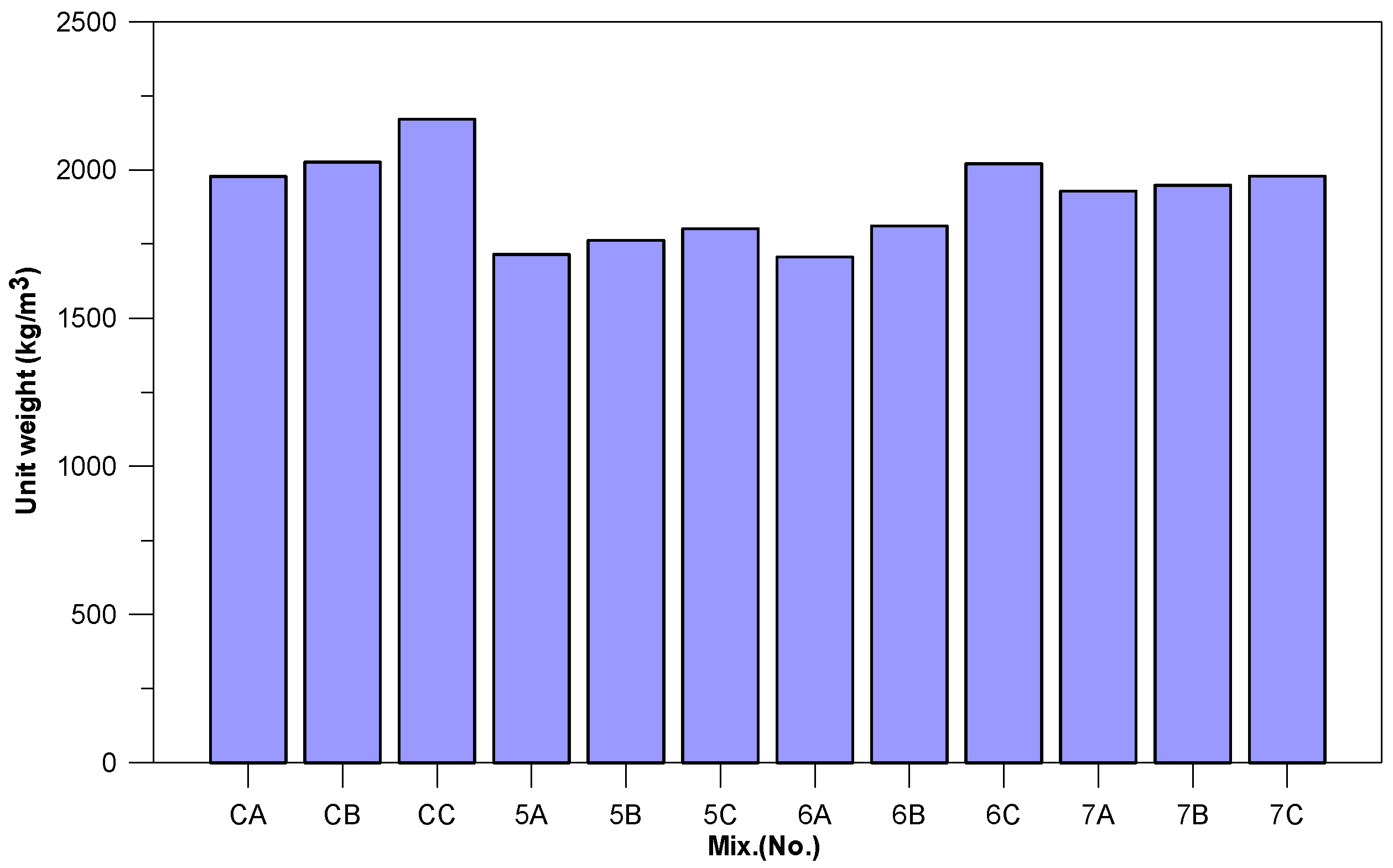
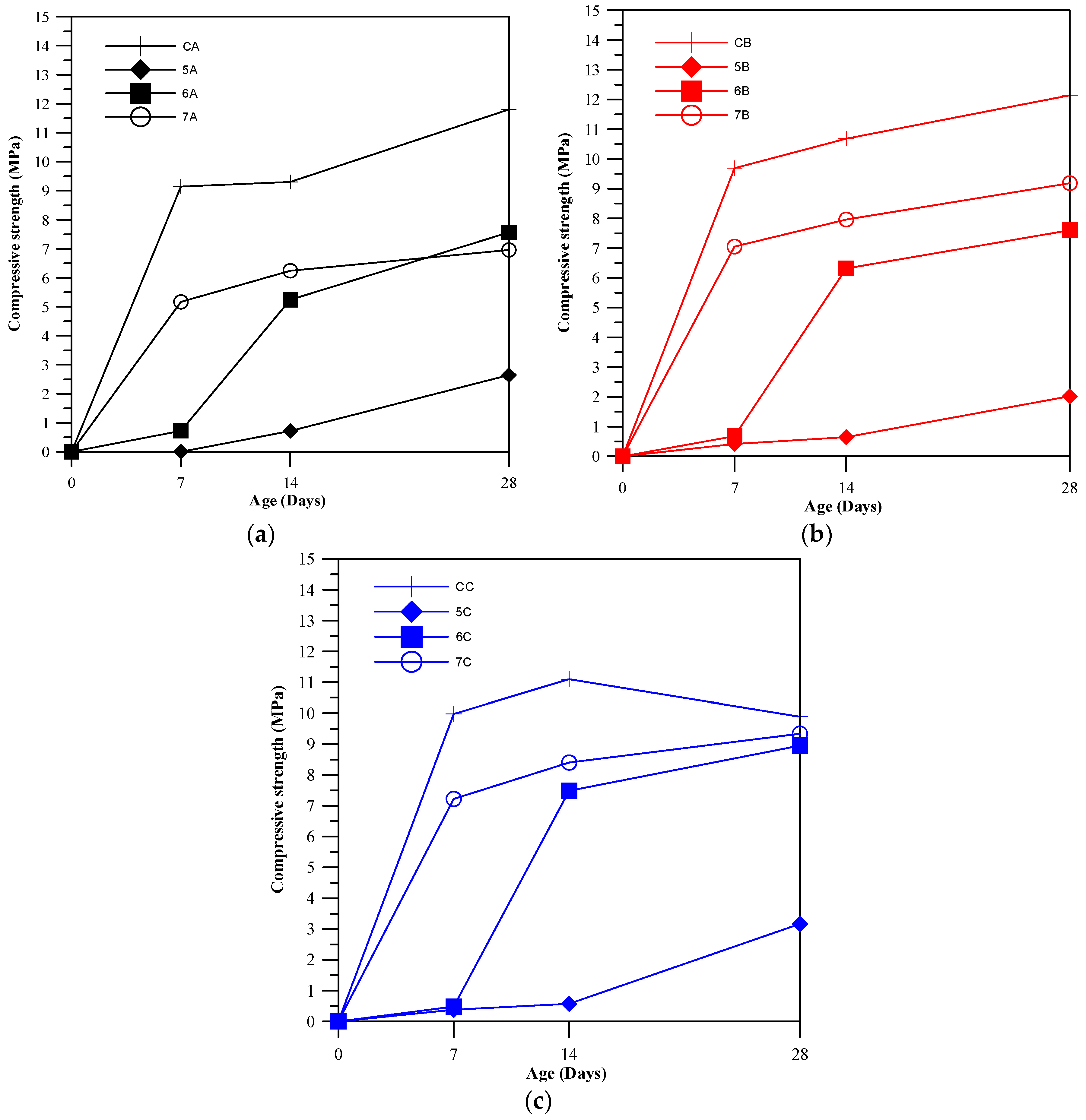
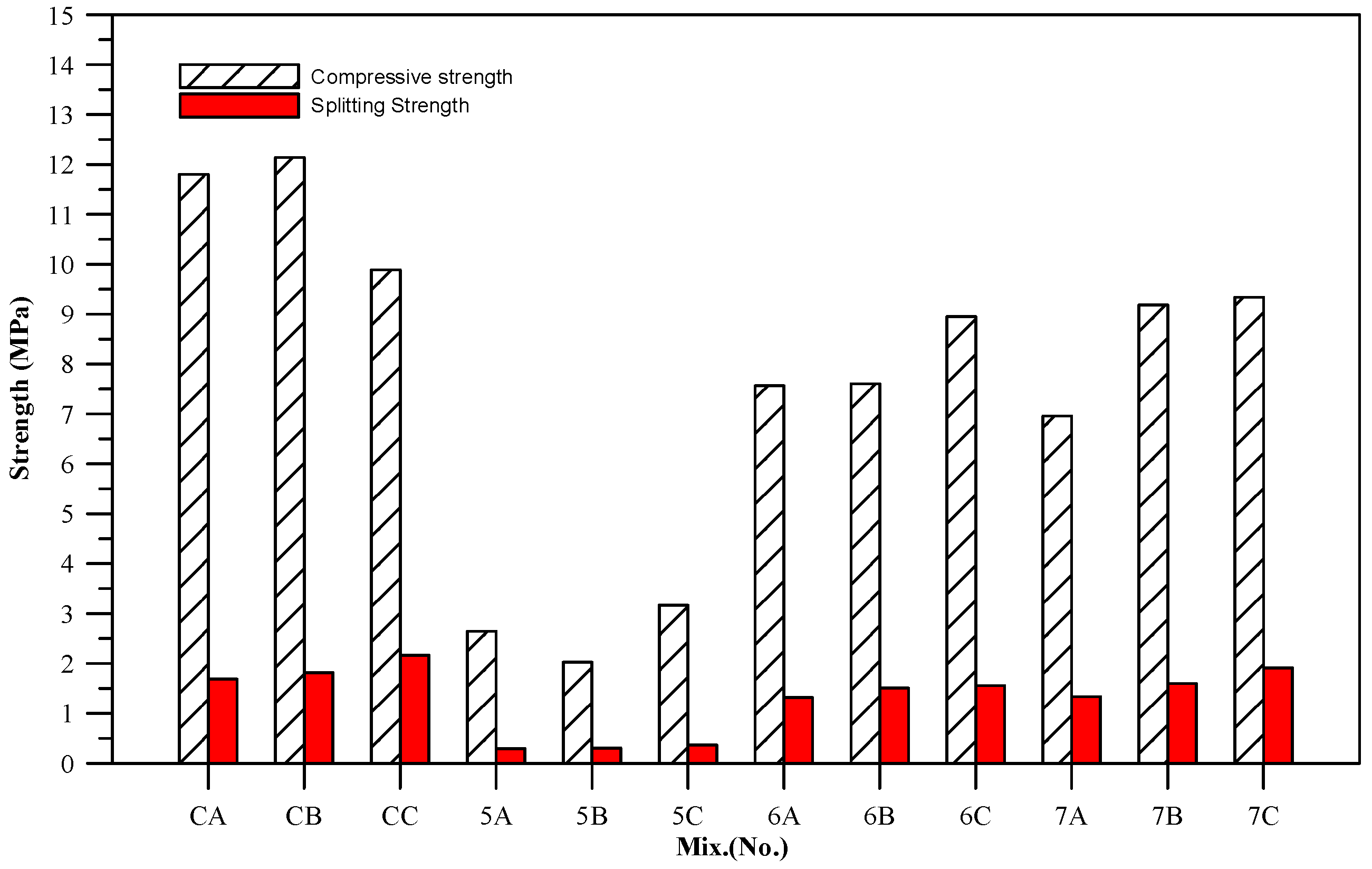

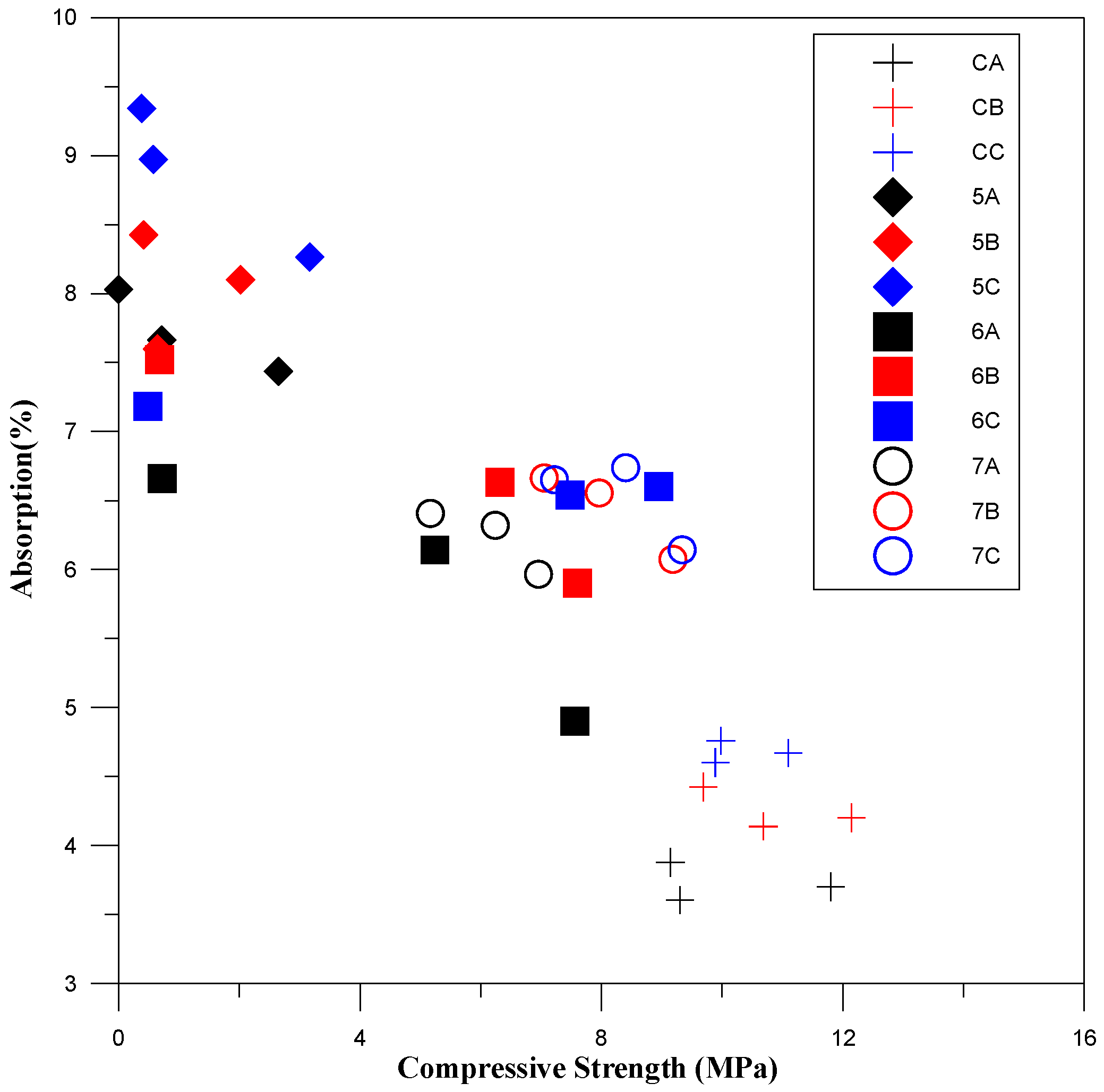
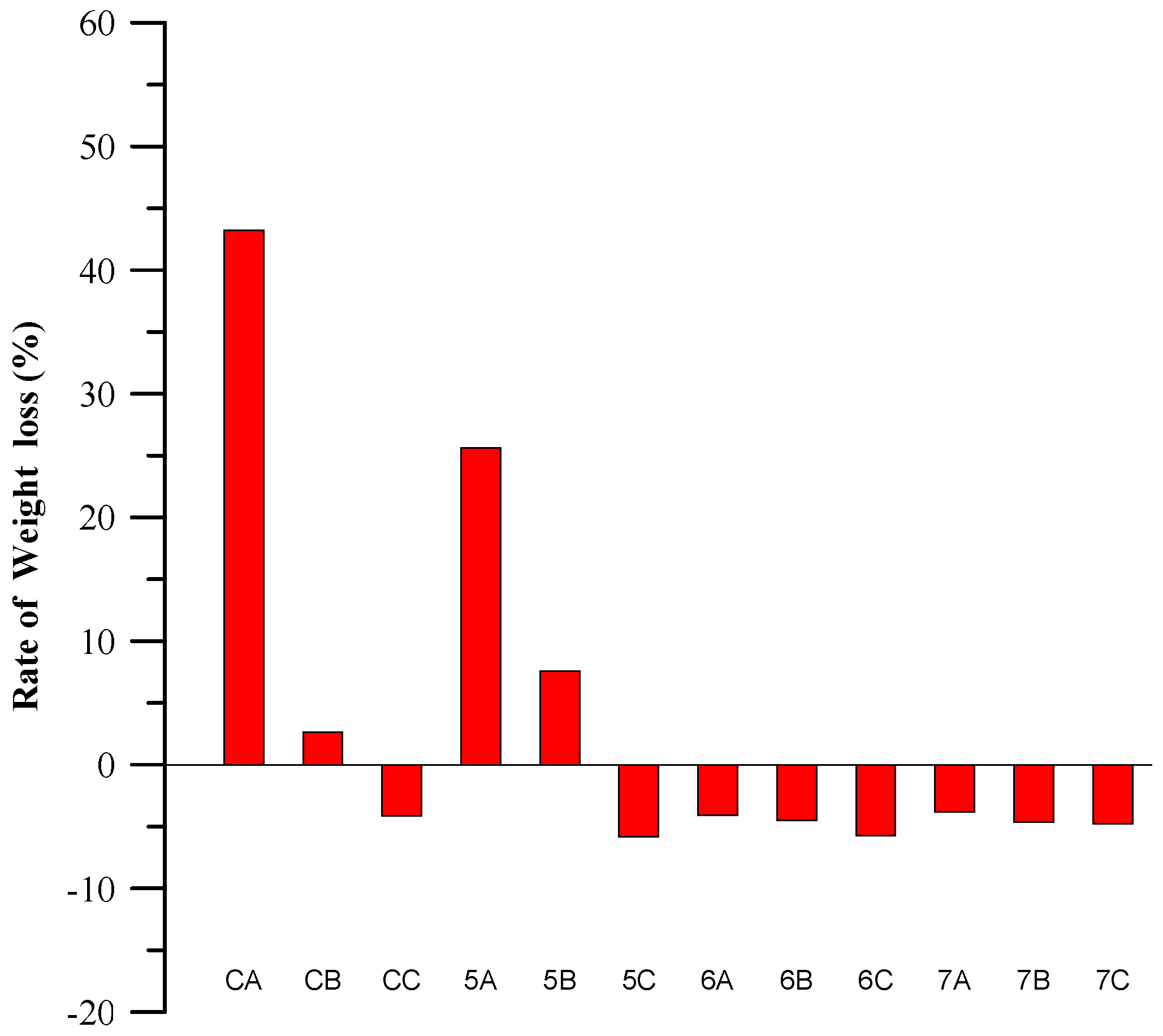
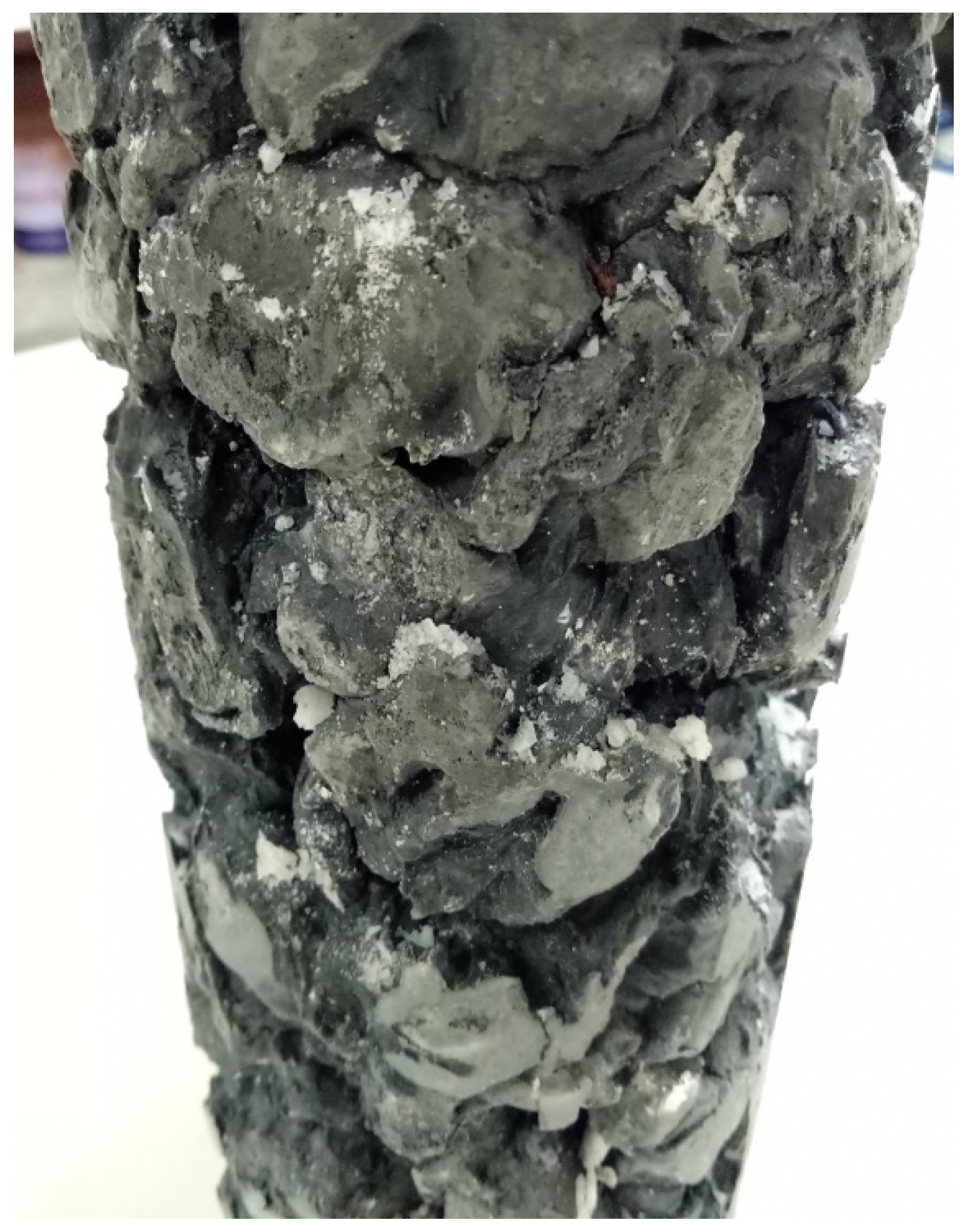
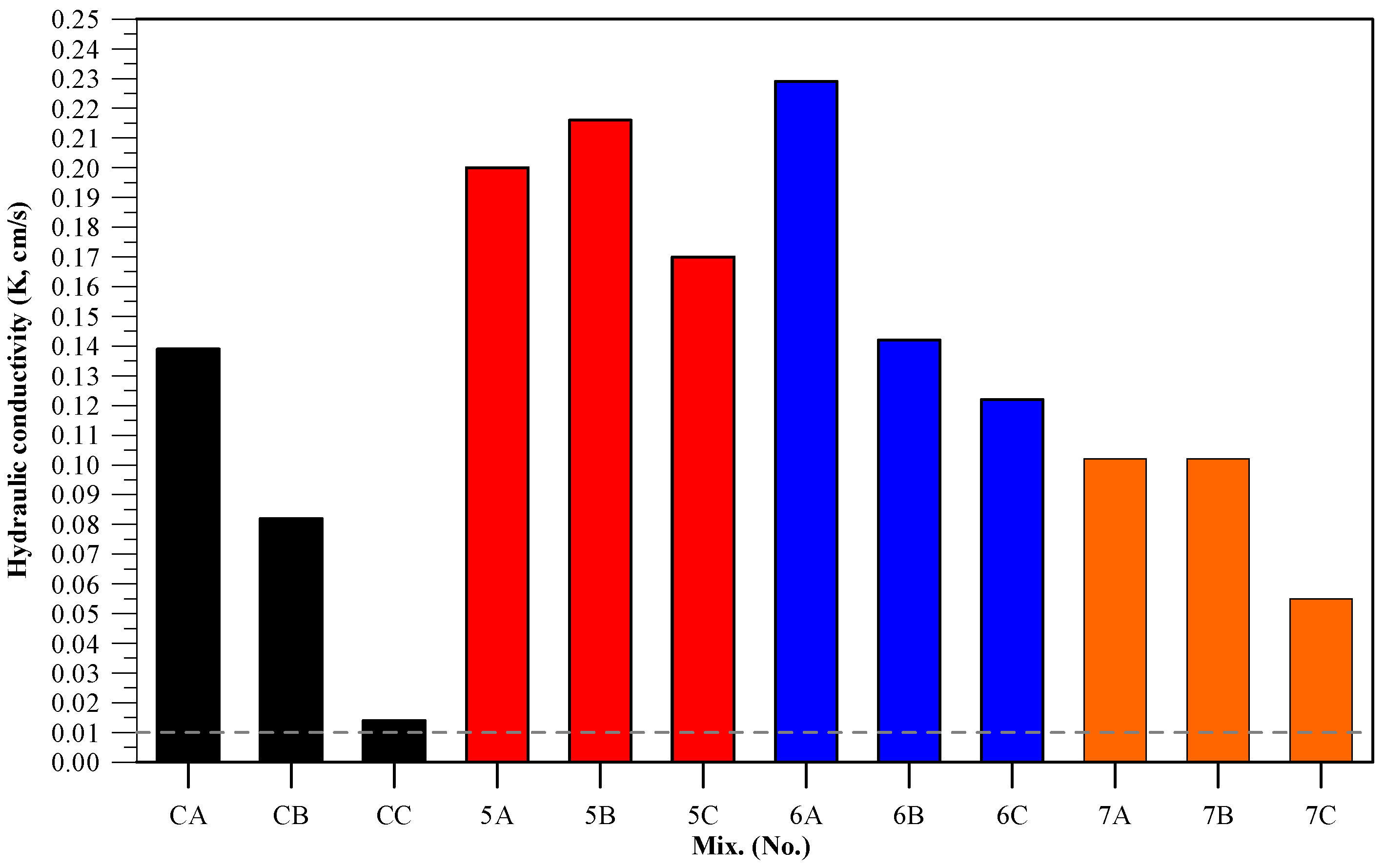
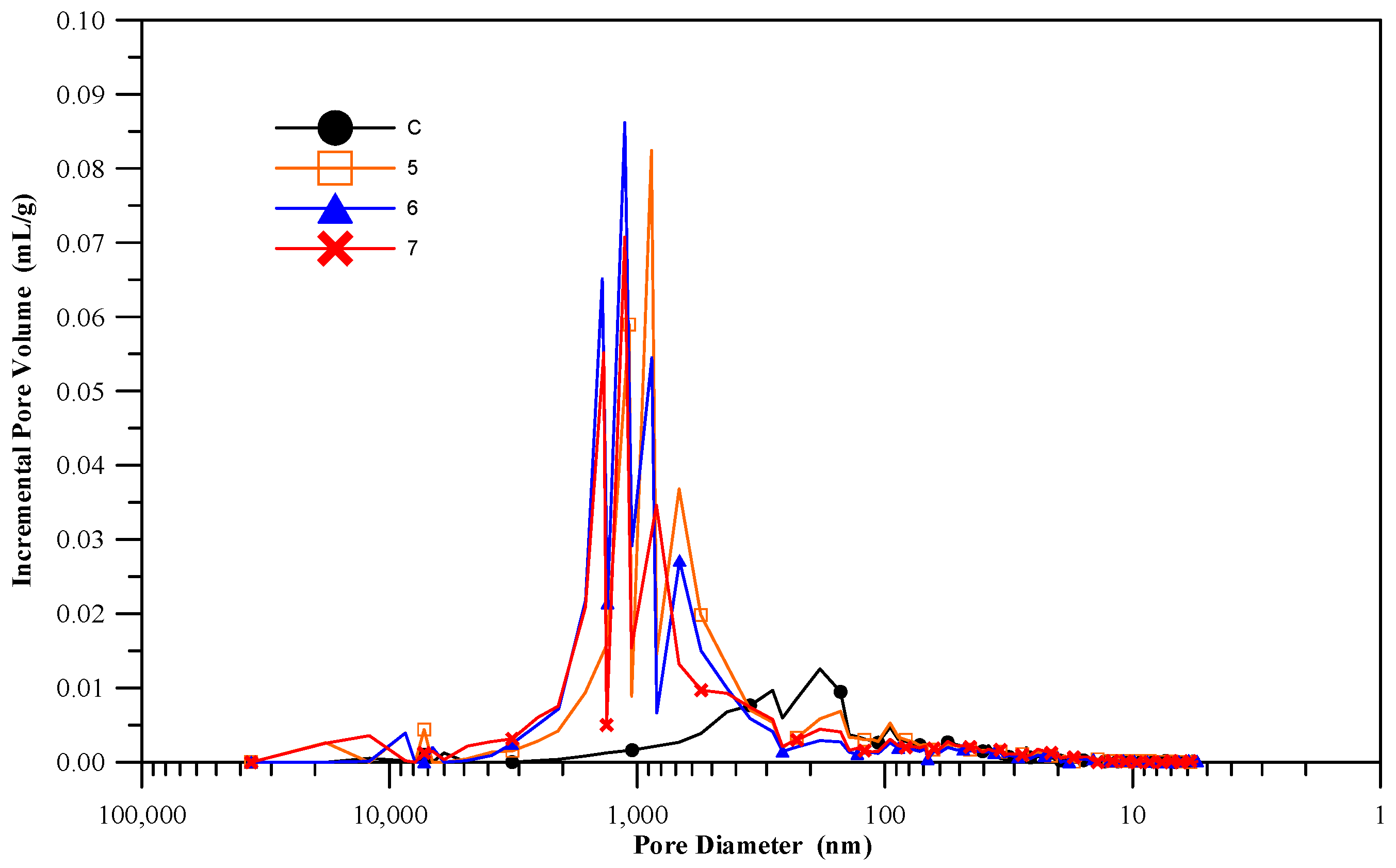
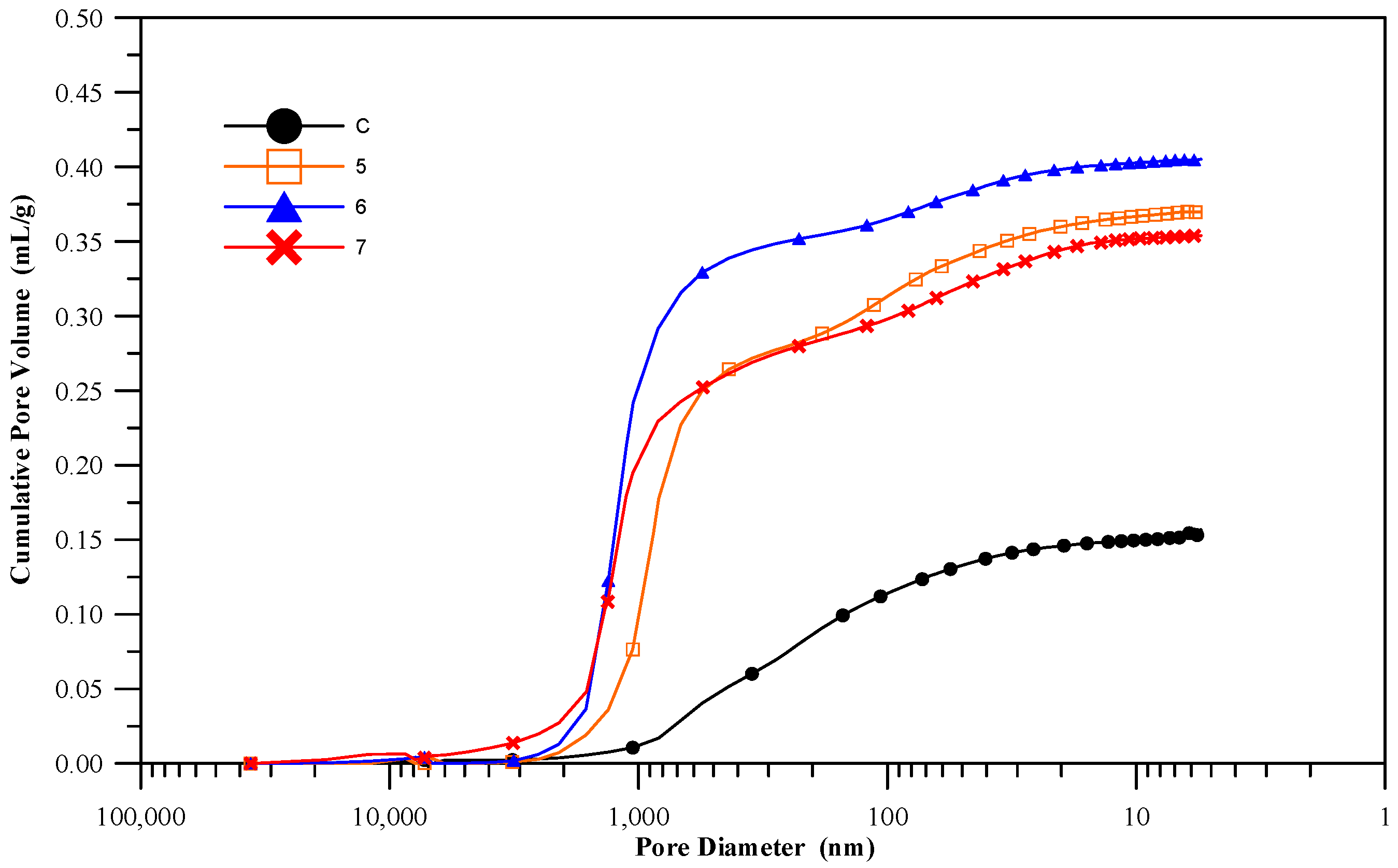
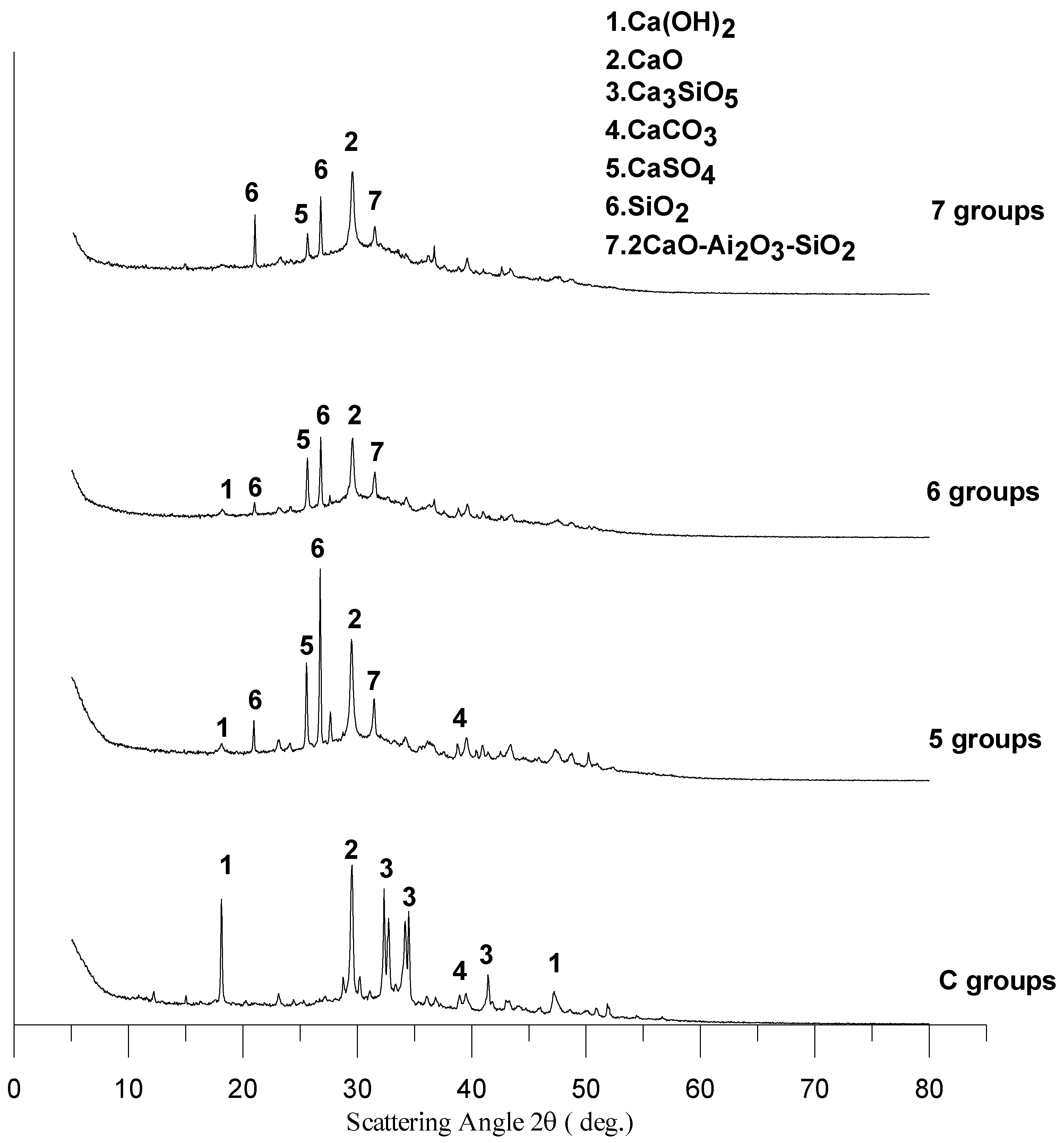
| Materials | Physical Test | Chemical Analysis | |||||||||||
|---|---|---|---|---|---|---|---|---|---|---|---|---|---|
| Fineness by Air Permeability (m2/kg) | Amount Retained on #325 Sieve (%) | Density (g/cm3) | Activity Index | Air Content of Mortar (%) | Loss on Ignition (%) | SiO2 (%) | Al2O3 (%) | Fe2O3 (%) | CaO (%) | MgO (%) | SO3 (%) | ||
| 7 Days (%) | 28 Days (%) | ||||||||||||
| Cement | 345 | - | 3.15 | - | - | 7.2 | 1.75 | 20.42 | 4.95 | 3.09 | 61.96 | 3.29 | 2.4 |
| CFFA | - | - | 2.73 | 92 | 99 | - | - | 29.47 | 19.27 | 3.49 | 35.54 | 1.82 | 7.36 |
| BFS | 586 | 0.7 | 2.88 | 112 | 133 | 3.65 | 0.1 | 33.68 | 14.37 | 0.29 | 40.24 | 7.83 | 0.66 |
| Mix No. | W/C | Water | Cement | BFS | CFFA | Coarse Aggregates | Superplasticizer | Thickener |
|---|---|---|---|---|---|---|---|---|
| 5A | 0.35 | 120.38 | - | 207.54 | 207.54 | 1619.00 | 24.91 | 2.08 |
| 5B | 0.35 | 137.58 | - | 237.21 | 237.21 | 1619.00 | 28.47 | 2.37 |
| 5C | 0.35 | 154.79 | - | 266.87 | 266.87 | 1619.00 | 32.03 | 2.67 |
| 6A | 0.35 | 132.83 | - | 249.05 | 166.03 | 1619.00 | 12.45 | 2.08 |
| 6B | 0.35 | 151.82 | - | 284.66 | 189.77 | 1619.00 | 14.23 | 2.37 |
| 6C | 0.35 | 170.80 | - | 320.25 | 213.50 | 1619.00 | 16.01 | 2.67 |
| 7A | 0.35 | 145.28 | - | 290.56 | 124.53 | 1619.00 | 0.00 | 2.08 |
| 7B | 0.35 | 166.05 | - | 332.10 | 142.33 | 1619.00 | 0.00 | 2.37 |
| 7C | 0.35 | 186.81 | - | 373.62 | 160.12 | 1619.00 | 0.00 | 2.67 |
| CA | 0.35 | 145.28 | 415.07 | - | - | 1619.00 | 0.00 | 0.00 |
| CB | 0.35 | 166.05 | 474.43 | - | - | 1619.00 | 0.00 | 0.00 |
| CC | 0.35 | 186.81 | 533.74 | - | - | 1619.00 | 0.00 | 0.00 |
© 2018 by the authors. Licensee MDPI, Basel, Switzerland. This article is an open access article distributed under the terms and conditions of the Creative Commons Attribution (CC BY) license (http://creativecommons.org/licenses/by/4.0/).
Share and Cite
Ho, H.-L.; Huang, R.; Hwang, L.-C.; Lin, W.-T.; Hsu, H.-M. Waste-Based Pervious Concrete for Climate-Resilient Pavements. Materials 2018, 11, 900. https://doi.org/10.3390/ma11060900
Ho H-L, Huang R, Hwang L-C, Lin W-T, Hsu H-M. Waste-Based Pervious Concrete for Climate-Resilient Pavements. Materials. 2018; 11(6):900. https://doi.org/10.3390/ma11060900
Chicago/Turabian StyleHo, Hsin-Lung, Ran Huang, Lih-Chuan Hwang, Wei-Ting Lin, and Hui-Mi Hsu. 2018. "Waste-Based Pervious Concrete for Climate-Resilient Pavements" Materials 11, no. 6: 900. https://doi.org/10.3390/ma11060900
APA StyleHo, H.-L., Huang, R., Hwang, L.-C., Lin, W.-T., & Hsu, H.-M. (2018). Waste-Based Pervious Concrete for Climate-Resilient Pavements. Materials, 11(6), 900. https://doi.org/10.3390/ma11060900






